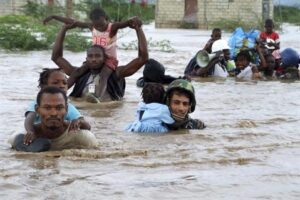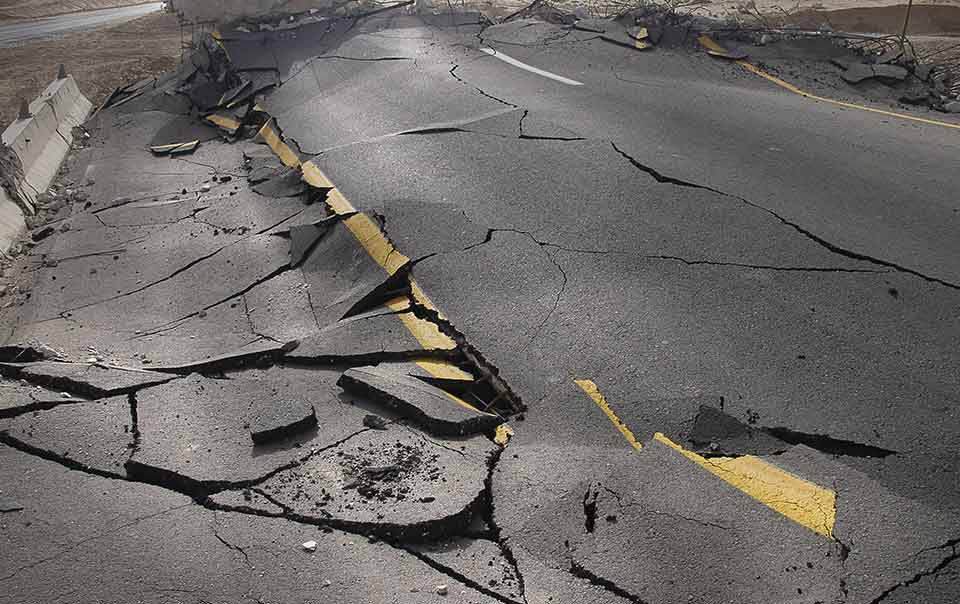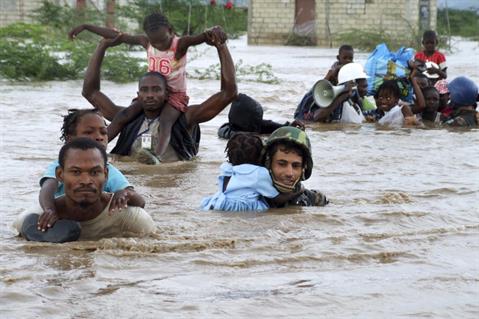Natural disasters are an inevitable occurrence that can happen at any time and anywhere in the world. They can cause significant damage to infrastructure, homes, and loss of life, which is why it is important to have a well-planned management system in place. In this blog post, we will explore the different types of natural disasters and the management systems in place to help mitigate their impact.
Types of Natural Disasters
a. Earthquakes
- Sudden release of energy from the Earth’s crust
- Can cause extensive damage to buildings and infrastructure
- Importance of earthquake-resistant structures and early warning systems
b. Floods
- Excessive amount of rainfall or overflowing of water bodies
- Can cause damage to buildings, roads, and bridges and lead to loss of life
- Flood management includes building levees and dams, early warning systems and evacuation plans
c. Hurricanes and Typhoons
- Large-scale weather events that can cause extensive damage to coastal areas
- High winds and heavy rainfall can cause severe damage to buildings and infrastructure
- Management includes building structures that can withstand high winds and developing evacuation plans
d. Tsunamis
- Large ocean waves caused by earthquakes or other events that displace a large amount of water
- Can cause significant damage to coastal areas and lead to loss of life
- Management includes early warning systems and evacuation plans for those living in coastal areas
e. Landslides
- Sudden movement of soil and rock down a slope
- Can cause damage to buildings and infrastructure and lead to loss of life
- Management includes monitoring slopes for potential movement, building retaining walls, and early warning systems
f. Wildfires
- Rapid spread of fire in a natural area
- Can cause damage to homes, businesses, and infrastructure and lead to loss of life
- Management includes creating firebreaks, early warning systems, and developing fire suppression systems
Natural Disaster and Management
a. Preparedness
- Taking steps before a natural disaster strikes to minimize its impact
- Developing emergency plans, conducting emergency drills, creating evacuation routes, and stockpiling emergency supplies
b. Response
- Immediate actions taken during and after a natural disaster to save lives and reduce damage
- Providing emergency medical services, search and rescue operations, and setting up emergency shelters
c. Recovery
- Actions taken to restore infrastructure and rebuild communities affected by the disaster
- Repairing damaged buildings and infrastructure, providing assistance to those affected, and implementing mitigation measures
d. Mitigation
- Long-term actions taken to reduce the impact of natural disasters
- Developing building codes and standards that can withstand natural disasters, creating early warning systems, and conducting research on the causes and effects of natural disasters
Government and Community Roles in Natural Disaster Management
a. Government Role
- Governments play a critical role in natural disaster management by creating policies and regulations that govern disaster management efforts
- Governments should also provide funding and support for emergency services, research and development of mitigation strategies, and public education and awareness campaigns
b. Community Role
- Communities can play an important role in natural disaster management by being prepared, informed and working together
- Individuals can take steps to prepare their homes and families for natural disasters, volunteering during relief efforts, and participating in emergency drills
Challenges in Natural Disaster Management
a. Limited Resources
- One of the biggest challenges in natural disaster management is the limited resources available to respond to disasters
- Governments and emergency services must prioritize resources to maximize their impact during and after a natural disaster
b. Complex Emergencies
- Natural disasters can create complex emergencies that require coordinated efforts from multiple agencies and organizations
- Governments and emergency services must work together to ensure a coordinated response and recovery effort
c. Climate Change
- Climate change is causing an increase in the frequency and intensity of natural disasters
- Governments and communities must work together to mitigate the effects of climate change and prepare for the increased frequency and intensity of natural disasters
Conclusion
Natural disasters are a reality that we must live with, and their impact can be devastating. However, with effective natural disaster management, we can minimize the impact of disasters on our communities and infrastructure. Governments and communities must work together to develop comprehensive natural disaster management strategies that address preparedness, response, recovery, and mitigation efforts. By working together, we can build a more resilient future and reduce the impact of natural disasters on our lives.

- What is a natural disaster?
a. A disaster caused by human intervention
b. A disaster caused by natural events
c. A disaster caused by both human intervention and natural events
d. A disaster caused by supernatural events
Answer: b - What is the most common natural disaster in the world?
a. Floods
b. Earthquakes
c. Hurricanes
d. Tornadoes
Answer: a - What is the most deadly natural disaster?
a. Floods
b. Earthquakes
c. Hurricanes
d. Tsunamis
Answer: d - What is an earthquake?
a. A sudden release of energy from the Earth’s crust
b. A sudden release of energy from the Earth’s core
c. A sudden release of energy from the atmosphere
d. A sudden release of energy from the ocean
Answer: a - What is a flood?
a. A sudden release of water from a dam
b. A sudden rise in sea level
c. Excessive amount of rainfall or overflowing of water bodies
d. A sudden release of water from a lake
Answer: c - What is a hurricane?
a. A large-scale weather event that can cause extensive damage to coastal areas
b. A sudden release of energy from the Earth’s core
c. A sudden release of energy from the atmosphere
d. A sudden release of energy from the ocean
Answer: a - What is a tsunami?
a. A sudden release of energy from the Earth’s crust
b. A sudden release of energy from the Earth’s core
c. A sudden release of energy from the atmosphere
d. A large ocean wave caused by earthquakes or other events that displace a large amount of water
Answer: d - What is a landslide?
a. A sudden movement of water down a slope
b. A sudden movement of soil and rock down a slope
c. A sudden movement of air down a slope
d. A sudden movement of fire down a slope
Answer: b - What is a wildfire?
a. A sudden release of water from a dam
b. A sudden rise in sea level
c. A rapid spread of fire in a natural area
d. A sudden release of energy from the atmosphere
Answer: c - What is the first step in natural disaster management?
a. Response
b. Recovery
c. Preparedness
d. Mitigation
Answer: c - What is the difference between a tornado and a hurricane?
a. Tornadoes are smaller than hurricanes
b. Tornadoes are more deadly than hurricanes
c. Tornadoes occur on land while hurricanes occur over water
d. Tornadoes and hurricanes are the same thing
Answer: c - What is the importance of earthquake-resistant structures?
a. They can withstand earthquakes better than regular structures
b. They are cheaper to build than regular structures
c. They are easier to build than regular structures
d. They are less safe than regular structures
Answer: a - What is an early warning system?
a. A system that warns people about a natural disaster before it happens
b. A system that warns people about a natural disaster after it happens
c. A system that provides emergency services during a natural disaster
d. A system that provides recovery services after a natural disaster
Answer: a - What is a firebreak?
a. A barrier that prevents fires from spreading
b. A barrier that prevents floods from spreading
c. A barrier that prevents earthquakes from occurring
d. A barrier that prevents hurricanes from occurring
Answer: a
- What is the importance of emergency supplies during a natural disaster?
a. They can provide food, water, and shelter to those affected by the disaster
b. They can cause more harm than good during a natural disaster
c. They are not necessary during a natural disaster
d. They are only useful during recovery efforts after a natural disaster
Answer: a - What is the role of the government in natural disaster management?
a. To prevent natural disasters from occurring
b. To respond to natural disasters after they occur
c. To provide recovery services after a natural disaster
d. To manage and coordinate all aspects of natural disaster management
Answer: d - What is the role of NGOs in natural disaster management?
a. To prevent natural disasters from occurring
b. To respond to natural disasters after they occur
c. To provide recovery services after a natural disaster
d. To manage and coordinate all aspects of natural disaster management
Answer: b - What is the importance of evacuation during a natural disaster?
a. It can save lives and prevent injuries
b. It is not necessary during a natural disaster
c. It can cause more harm than good during a natural disaster
d. It is only useful during recovery efforts after a natural disaster
Answer: a - What is the importance of communication during a natural disaster?
a. It can help disseminate information about the disaster and coordinate relief efforts
b. It is not necessary during a natural disaster
c. It can cause more harm than good during a natural disaster
d. It is only useful during recovery efforts after a natural disaster
Answer: a - What is the importance of search and rescue operations during a natural disaster?
a. They can save lives and prevent injuries
b. They are not necessary during a natural disaster
c. They can cause more harm than good during a natural disaster
d. They are only useful during recovery efforts after a natural disaster
Answer: a - What is the importance of medical aid during a natural disaster?
a. It can treat injuries and prevent the spread of diseases
b. It is not necessary during a natural disaster
c. It can cause more harm than good during a natural disaster
d. It is only useful during recovery efforts after a natural disaster
Answer: a - What is the importance of psychological support during a natural disaster?
a. It can help those affected by the disaster cope with trauma and stress
b. It is not necessary during a natural disaster
c. It can cause more harm than good during a natural disaster
d. It is only useful during recovery efforts after a natural disaster
Answer: a - What is the importance of transportation during a natural disaster?
a. It can help evacuate people and transport emergency supplies
b. It is not necessary during a natural disaster
c. It can cause more harm than good during a natural disaster
d. It is only useful during recovery efforts after a natural disaster
Answer: a - What is the importance of power supply during a natural disaster?
a. It can provide electricity to emergency services and communication systems
b. It is not necessary during a natural disaster
c. It can cause more harm than good during a natural disaster
d. It is only useful during recovery efforts after a natural disaster
Answer: a - What is the importance of water supply during a natural disaster?
a. It can provide clean water for drinking and hygiene purposes
b. It is not necessary during a natural disaster
c. It can cause more harm than good during a natural disaster
d. It is only useful during recovery efforts after a natural disaster
Answer: a
- What is the importance of food supply during a natural disaster?
a. It can provide sustenance for those affected by the disaster
b. It is not necessary during a natural disaster
c. It can cause more harm than good during a natural disaster
d. It is only useful during recovery efforts after a natural disaster
Answer: a - Which of the following is NOT an example of a natural disaster?
a. Earthquake
b. Hurricane
c. Terrorist attack
d. Tsunami
Answer: c - What is the purpose of a disaster response plan?
a. To prevent natural disasters from occurring
b. To respond to natural disasters after they occur
c. To provide recovery services after a natural disaster
d. To manage and coordinate all aspects of natural disaster management
Answer: b - What is the difference between a natural disaster and a man-made disaster?
a. Natural disasters are caused by natural forces, while man-made disasters are caused by human actions or negligence
b. Natural disasters are more dangerous than man-made disasters
c. Man-made disasters are easier to prevent than natural disasters
d. Man-made disasters are always intentional, while natural disasters are not
Answer: a - What is the importance of emergency preparedness in natural disaster management?
a. It can help prevent injuries and save lives
b. It is not necessary during a natural disaster
c. It can cause more harm than good during a natural disaster
d. It is only useful during recovery efforts after a natural disaster
Answer: a - What is the importance of public awareness campaigns in natural disaster management?
a. They can inform the public about potential risks and help prevent injuries and loss of life
b. They are not necessary during a natural disaster
c. They can cause more harm than good during a natural disaster
d. They are only useful during recovery efforts after a natural disaster
Answer: a - Which of the following is NOT a way to mitigate the impact of natural disasters?
a. Disaster response planning
b. Emergency preparedness
c. Deforestation
d. Building codes and regulations
Answer: c - What is the importance of risk assessment in natural disaster management?
a. It can help identify potential risks and inform disaster response planning
b. It is not necessary during a natural disaster
c. It can cause more harm than good during a natural disaster
d. It is only useful during recovery efforts after a natural disaster
Answer: a - What is the importance of international cooperation in natural disaster management?
a. It can facilitate the sharing of resources and expertise to respond to disasters more effectively
b. It is not necessary during a natural disaster
c. It can cause more harm than good during a natural disaster
d. It is only useful during recovery efforts after a natural disaster
Answer: a - What is the importance of social media during a natural disaster?
a. It can help disseminate information about the disaster and coordinate relief efforts
b. It is not necessary during a natural disaster
c. It can cause more harm than good during a natural disaster
d. It is only useful during recovery efforts after a natural disaster
Answer: a - What is the importance of public-private partnerships in natural disaster management?
a. They can facilitate the sharing of resources and expertise to respond to disasters more effectively
b. They are not necessary during a natural disaster
c. They can cause more harm than good during a natural disaster
d. They are only useful during recovery efforts after a natural disaster
Answer: a
- What is the importance of early warning systems in natural disaster management?
a. They can provide advance notice of potential disasters, allowing for evacuation and other preparedness measures
b. They are not necessary during a natural disaster
c. They can cause more harm than good during a natural disaster
d. They are only useful during recovery efforts after a natural disaster
Answer: a - What is the importance of search and rescue operations during a natural disaster?
a. They can save lives and provide critical medical attention to those in need
b. They are not necessary during a natural disaster
c. They can cause more harm than good during a natural disaster
d. They are only useful during recovery efforts after a natural disaster
Answer: a - What is the importance of post-disaster recovery efforts in natural disaster management?
a. They can help affected communities rebuild and return to normalcy after a disaster
b. They are not necessary during a natural disaster
c. They can cause more harm than good during a natural disaster
d. They are only useful during response efforts after a natural disaster
Answer: a - Which of the following is an example of a natural disaster that can occur in coastal areas?
a. Earthquake
b. Tornado
c. Hurricane
d. Wildfire
Answer: c - Which of the following is an example of a natural disaster that can occur in mountainous regions?
a. Tornado
b. Tsunami
c. Avalanche
d. Flood
Answer: c - Which of the following is an example of a natural disaster that can occur in urban areas?
a. Hurricane
b. Earthquake
c. Fire
d. Tsunami
Answer: c - Which of the following is an example of a natural disaster that can occur in rural areas?
a. Hurricane
b. Tornado
c. Earthquake
d. Tsunami
Answer: b - Which of the following is an example of a natural disaster that can occur in arid regions?
a. Flood
b. Hurricane
c. Drought
d. Avalanche
Answer: c - What is the importance of evacuation procedures during a natural disaster?
a. They can save lives and prevent injuries
b. They are not necessary during a natural disaster
c. They can cause more harm than good during a natural disaster
d. They are only useful during recovery efforts after a natural disaster
Answer: a
- Best Book for SSC CGL 2024
- The Muslim Invasion of India: A Historical Perspective
- Gautam Buddha and Buddhism
- Revolt of 1857: India’s First War of Independence
Recommeded Reading








